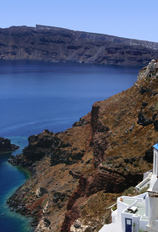Author: RichardNika
Date of Trip: May 2007
I made a two-day/one-night return trip to New Orleans May 8 and 9, 2007. I had been there before for five days for a conference only one month before Katrina. I had one day free then, and used it to see and hear the wonderful Preservation Hall Jazz Band, eat at Mothers and ride the St. Charles streetcar line. I had a weekend there, and joined the mob on Bourbon Street at night and yes, the gals really do flash for beads, and not just at Mardi Gras.
This time was different. I checked in at the Riverside Hilton and then walked over to Gray Line, where I had reserved the “Katrina Tour.” It’s 3 hours, costs $35, and is very educational. The guide, a local woman named Pat, didn’t just provide a running commentary – she provided the equivalent of a college course, Katrina 101. She explained the logistics and mechanics – how and why the water entered, how different areas were affected differently, and how and why many apparently undamaged homes and shopping centers had become unusable. We saw all of the most impacted areas including the now-famous Lower Ninth Ward, and virtually all of the dikes and levees that had been breached, as well as others that had remained intact. We saw houses that looked undamaged – until you took a better look and realized that the bottom 3 or 4 feet of the house looked as if it had been half-gnawed away by animals. Some blocks had become emptied. Some homes had holes in the roofs, chopped to rescue people from attics. In many areas, there were no water lines visible on walls, because everything had been under water.
Many popular myths were corrected. Among the most prevalent was the notion that the Mississippi River had flooded. There was no flooding from the river. People who lived downtown and adjoined it didn’t even know what had happened elsewhere for a while. The danger depended on how far you were from a breach. If you were very close, she said, you had four minutes to get out of your house.
She had seen the Spike Lee documentary “When the Levees Broke,” and her view was that it was accurate as far as it went, but showed only the very worst, and that the notion that any levees were deliberately blown up was a total myth.
There is a 20 minute stop, during which you have free admission to the New Orleans Botanical Garden and one free soft drink. I highly recommend this tour.
Unfortunately, Preservation Hall now has music only four nights a week instead of seven. My night was not one of them. If you do go, get in line at least 30-40 minutes early outside, and when the door opens, don’t be delicate about it – get in there fast and grab a seat on one of the benches, or you’ll end up standing, or sitting on the floor. Make sure you have the exact amount for admission – I think it’s still $8 – as they won’t give change. Bring stuff to put on your seat if you need to go for a break.
I ate gumbo and a po’boy at Mothers again (401 Poydras Street – ask for your po’boy with gravy and “debris”) and beignets from Cafe du Monde, walked through Jackson Square, and enjoyed being able to sit outside and drink beer from a can without some cop threatening to bust me for committing the crime (only in America!) of “drinking in public.” I spent an entire morning at the World War II museum (formerly the D-Day museum) which I highly recommend. If you’re into the Civil War, the close-by Confederate Museum is filled with genuine artifacts. Being the region’s oldest museum, the museum itself is an artifact, dating from 1891.
I pride myself on getting in and out of airports cheaply, and saving that money for worthwhile things, like those I just mentioned. Here’s how to do it in New Orleans. Go to the upper level, outside, and go to the median in the roadway – a cop or employee can direct you. Take the Jefferson Transit E-2 bus for $1.60. They take dollar bills. It takes you very close to downtown and you can connect with the regular public transit lines. Find them on line and you’ll have a map, time table and phone number.
Most of the St. Charles streetcar line, the oldest in America, is still not in use, but they expect to have it ready before the end of the year. It’s a wonderful ride. Meanwhile, their green streetcars have replaced all the others on the now-open Canal Street and Riverside lines. Enjoy.
We hand-pick everything we recommend and select items through testing and reviews. Some products are sent to us free of charge with no incentive to offer a favorable review. We offer our unbiased opinions and do not accept compensation to review products. All items are in stock and prices are accurate at the time of publication. If you buy something through our links, we may earn a commission.
Related
Top Fares From
Today's Top Travel Deals
Brought to you by ShermansTravel
Greece: 9-Night Vacation, Incl. Meteora &...
Exoticca
 vacation
$2099+
vacation
$2099+
New Year Sale: Luxe, 9-Nt Alaska...
Oceania Cruises
 cruise
$3599+
cruise
$3599+
Ohio: Daily Car Rentals from Cincinnati
85OFF.com
 Car Rental
$19+
Car Rental
$19+



